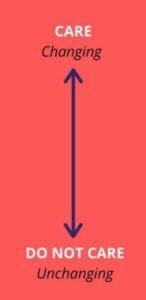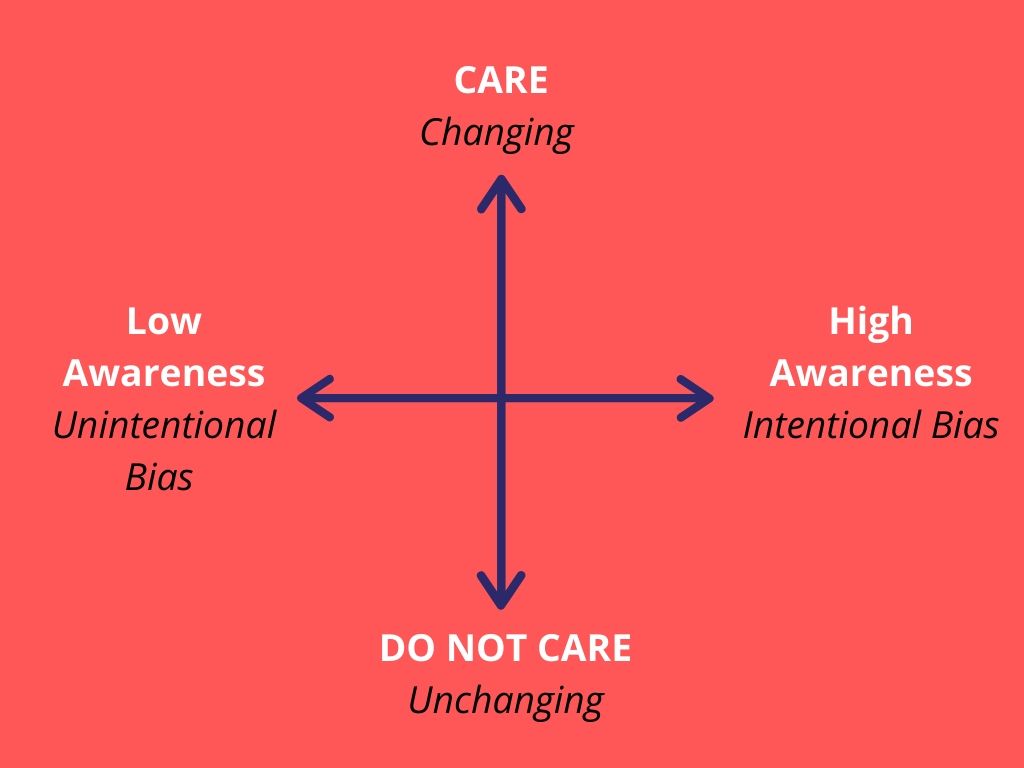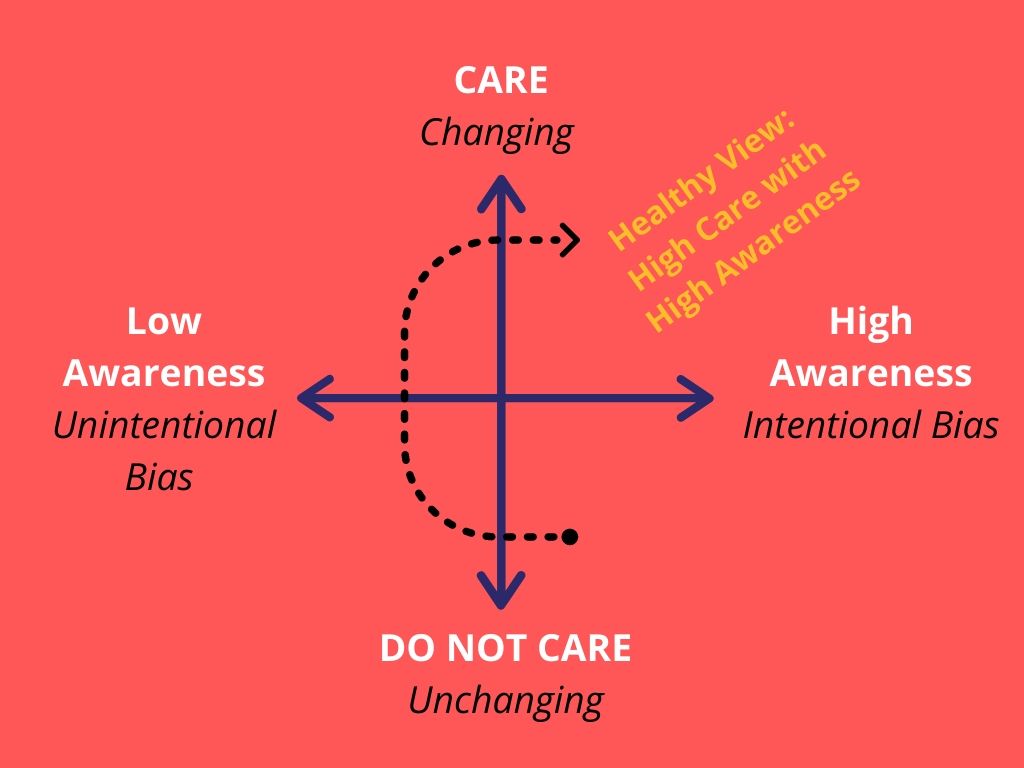How Do You Know If You’re Racist?
Uncovering Racial Bias
How do you know if you’re racist? It’s almost an impossible question, akin to considering whether or not you think you’re a bad person. Our lives are filled with biases that protect us from thinking we’re too bad compared to those around us. Check out this list of common biases and assumptions. For example, the confirmation bias helps us interpret information to reinforce our existing beliefs. In the end, we all want to believe we’re the good guys in the story.
However, sometimes we’re not. It’s possible that we have harmful racial biases that are impacting others in ways we may never even know. A recent study found that those who held the most prejudice against other races considered themselves less racist than the average person. What if you could find out your level of prejudice by asking two questions? Below I present a framework that can help you know where you stand in regard to racial bias.
Before I begin…
I want to make it clear that I am white and do not consider myself an expert on the African-American experience. I have lived in a predominantly African-American city and my children have attended a mostly African-American school system since Kindergarten. This doesn’t mean I deserve to write anything on this subject. However, the stories and experiences of those I care about in regards to their race moves me to constantly consider how I can learn, change, grow, and attempt to be a part of the solution rather than a passive participant in the problem. Therefore, I humbly submit my musings for a Framework for Racism.
Two Related Spectrums
As I’ve thought through factors that impact whether or not a person has racist tendencies, I hypothesize two connected spectrums. The first spectrum relates to a person’s awareness of their biases. The second spectrum builds on their level of care to confront and change their biases.
Spectrum 1: Level of Awareness
First, we should consider how aware we are of our racial biases. The truth is, we all have some racial bias (check out this study from Harvard to learn more). Our awareness may be low with unintentional bias, or high with intentional bias.

Most people will naturally lean towards “Low” awareness of their racial biases. We like to believe we don’t have any because it makes us feel better about ourselves. But, what if you have more biases than you think?
| “Low” Awareness of Racial Biases |
|---|
| Unintentional |
| May believe they don’t have an issue |
| Unconscious |
| “I don’t see color” |
| “All Lives Matter” |
| Talk of “our country” that only includes white perspective |
| Think racism is in the past |
| Consider discussions on race to be divisive and upsetting |
On the other end of this spectrum is an individual with “High” awareness of their racial biases. They are aware of how they view individuals of various minority groups. Their views may be purposeful and thought out.
| “High” Awareness of Racial Biases |
|---|
| Intentional |
| Believe the issue is with minorities |
| Conscious |
| “I’m not prejudiced but…” |
| Talk of “our country” that only includes white perspective |
| Know racism exists, but not my problem |
Spectrum 2: Caring Enough to Change
The second spectrum is built upon the first. A person may have conscious or unconscious biases, but what they do with their biases is what makes the difference.

An individual with “High” Care is quick to learn from another’s perspective and listen to their point of view. They will believe what others share about their experiences. This individual works to confront their own natural biases in order to partner with those facing injustice to create a more just society for all.
| “High” Care to Change |
|---|
| Allow affected groups to define their struggles |
| Work to unveil and confront their personal biases |
| Learn with humility |
| Believe injustice exists as affected groups describe |
| Feel responsible to be a part of the solution |
On the other end of the spectrum are those who do not care to change or confront their personal biases. They may blame the group receiving their prejudice and believe it’s their job to fix the problem. They may be content with a “separate but equal” mentality professing, “Why can’t they just do their own thing and leave us alone”.
| “Low” Care, Do Not Wish to Change |
|---|
| Their beliefs about affected groups define how they interpret situations |
| It’s their fault I feel this way |
| Feel they know all they need to know |
| Believe people will always be racist |
| Think affected groups are over-reacting |
| Do not feel “their” issue should become “my issue” |
| I’m unaffected so it’s not my problem |
Enter the matrix- putting it all together
These spectrums work together to form a racial bias matrix. As you think through any racial issue that pops up, try pinpointing where you are on this matrix. You can do this by asking yourself two questions and rating yourself on a 5 point scale.

Question 1: How aware are you of your biases on this topic? 1 = very little, 5 = very much
Asking this question will only get you so far. Next, you need to figure out how open you are to listening, learning and understanding the topic from the perspective of those most affected by it.
Question 2: How open are you to changing your views based on the perspective of those directly impacted by the topic? 1 = very little, 5 = very much
How to become anti-racist
The more aware you become of your personal biases, along with the more you care to learn and listen to those most impacted by injustice, the closer you will be to becoming anti-racist. On the other hand, the less you care to listen and learn, the greater the chance that you are more “racist” than you think. This doesn’t mean that you are evil, but it does mean that you might be carrying conscious or unconscious biases that impact how you treat others- whether your mean to or not.

Try out the matrix
Check out the statements below and determine where you stand in the matrix for each statement. We all have work to do to confront our biases. But we can’t fix what we don’t acknowledge.
- Police can treat African-Americans differently than White people.
- African-Americans can be nervous when spending time in an upper-class neighborhood.
- African-American men can be treated as if they are an assumed threat.
- African-Americans experience small acts of bias and racism throughout their life.
- African-Americans are given much harsher sentences than White people in the court system.
- Poverty is often not a lack of intelligence, but a lack of opportunity.
Where do we go from here
Everyone has biases. Some biases, like preferring pizza over pasta or time at the beach over time in the mountains, are neutral and harmless. But, our conscious and unconscious biases based on race can be harmful and sometimes even deadly. Would you consider confronting your personal biases? We all want to live in a society where people are treated fairly. Unfortunately, African-Americans still feel the sting of racism buzzing about their lives. Many of us are unaffected by their struggle because it is not a part of our experience. However, as MLK Jr. once wrote, “Injustice anywhere is a threat to justice everywhere”.
Going deeper

97 Things White People Can Do for Racial Injustice
Final notes
I’d like to share a few final notes. First, this post primarily mentions bias towards African-Americans. This is not meant to minimize or invalidate the experiences of other racial groups in America. However, the terrible killings of Ahmaud Arbery, George Floyd, and unfortunately many others have served as a catalyst for discussions on the treatment of African-Americans in this country.
Second, this post focuses on personal bias. As Phil Vischer explains in his video, there is also something called structural racism. This has to do with laws and actions enacted to keep people of color from experiencing full success and prosperity in America. I sometimes read comments on social media where white people really struggle to believe these exist. I think we want to believe America is the kind of great country where anyone can jump in, work hard, and find success. Within this view, anyone’s lack of success is due to poor work ethic and not taking advantage of the opportunities presented. Accepting the reality of structural racism attacks this noble view and the frame through which we see ourselves and our country.
Third, I am a Christian. We’re often portrayed as angry people who somehow end up fighting on the wrong side of justice issues. I wish I could blame this portrayal on the media and say it’s never true- but I can’t. I can, however, say it’s not always true and there are many working everyday to stand for injustice. I feel this view better aligns with God’s heart in the Bible. Throughout scripture, God expresses his desire for true justice, challenging the church to care for the overlooked and underprivileged. I feel like becoming more like God includes growing to see people more like He sees them. God is for people. He loves people as much as moms and dads love their own children. In light of this, if my brother, sister, mom, or dad were pulled over for doing nothing, assumed to be a threat, treated with hostility, and then murdered, I would be so upset I would never stop talking about it to anyone who would listen. I have friends who have experienced loss through the suicide of someone very dear to them. Years later they continue to fight for suicide prevention (which totally makes sense). As we begin to see people like God sees them, the battered and bruised should tug on our hearts, calling us to fix what’s so very broken in this world.
Thanks for reading
Thanks for taking the time to read this post. I hope that you’ll share this post and share what you’ve been learning over the past few months. I know that these discussions are hard for many people. Thank you for taking the time to read and consider.